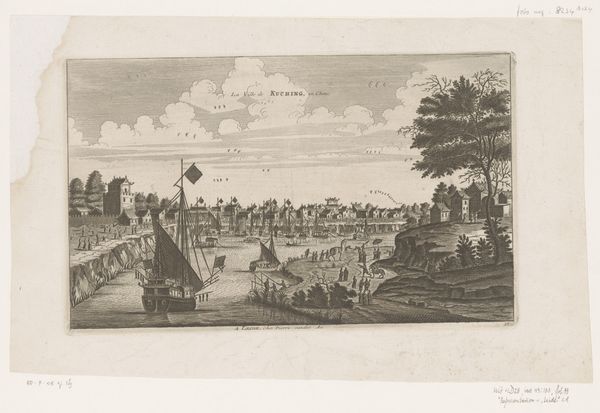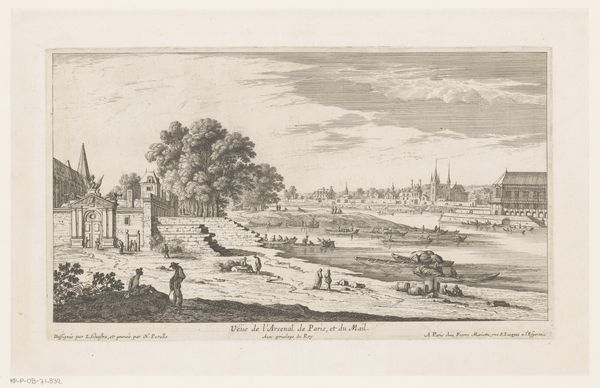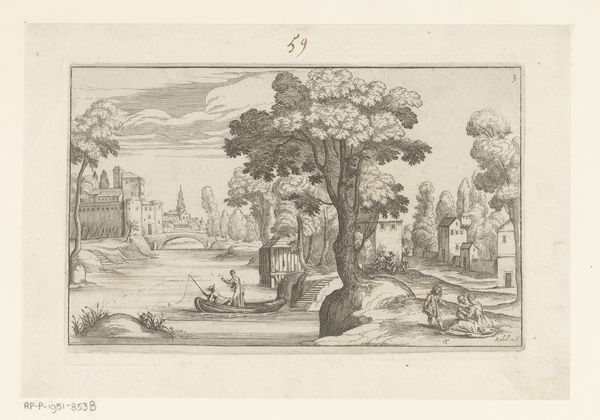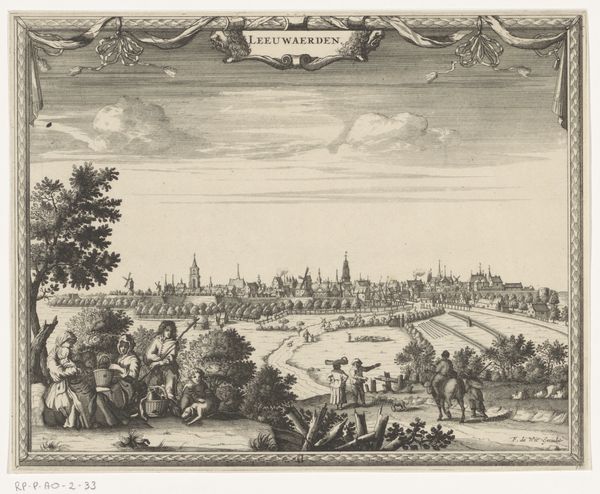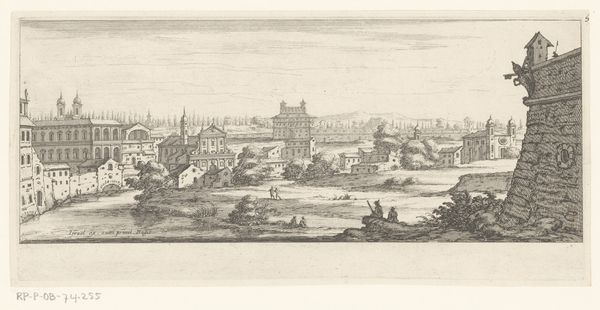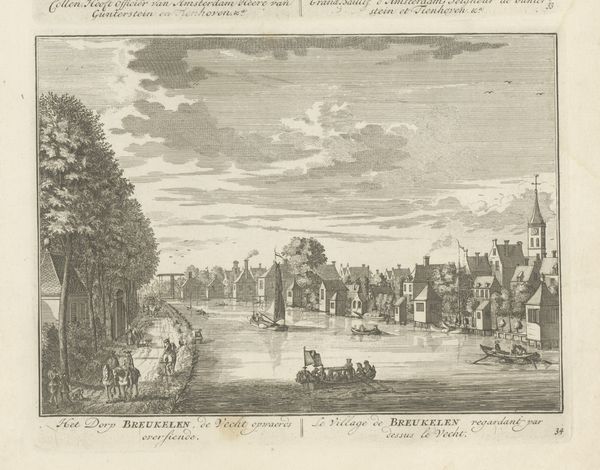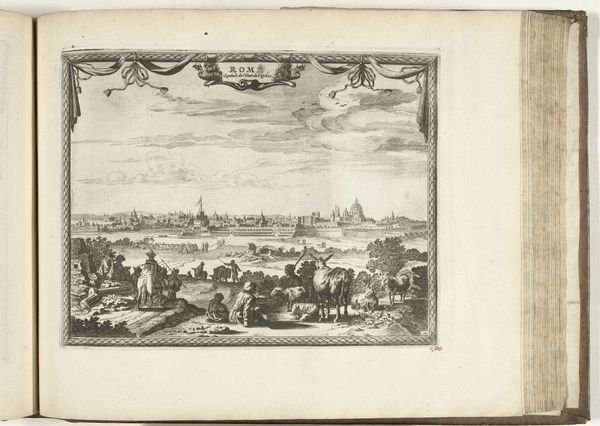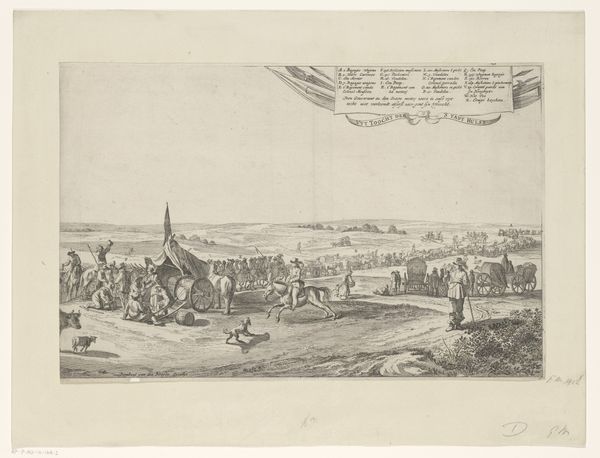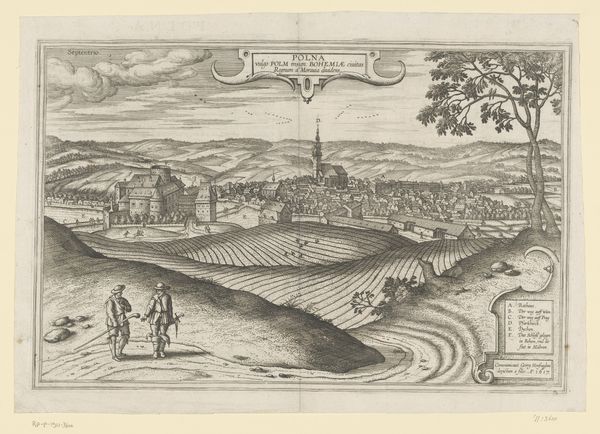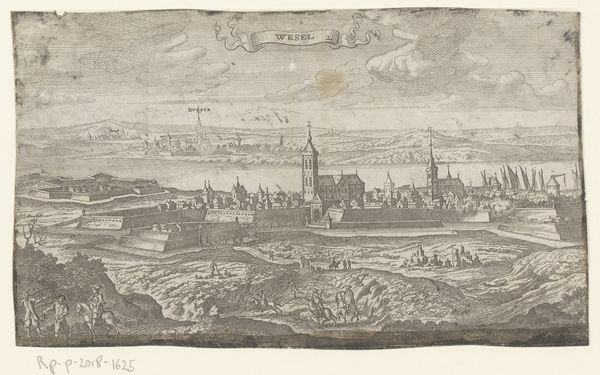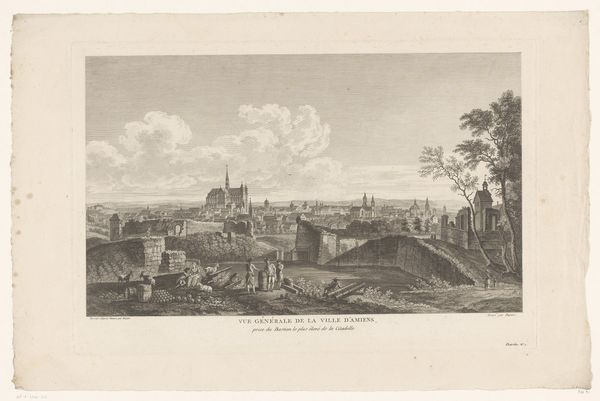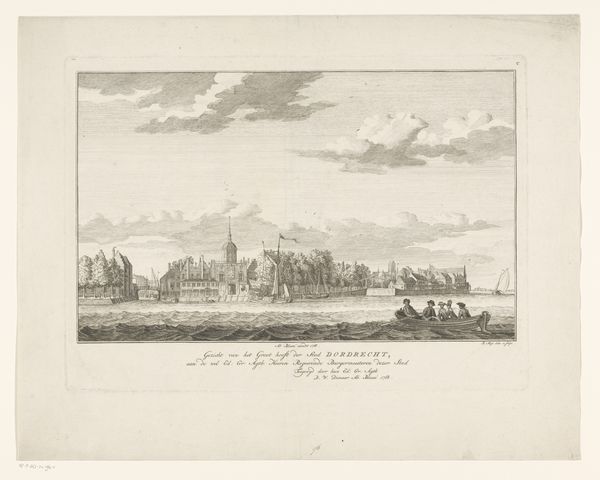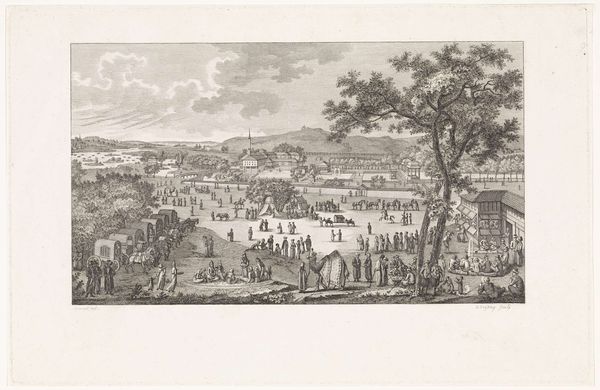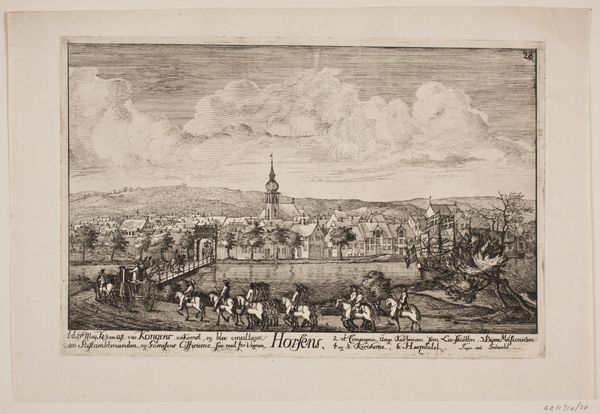
print, engraving
#
narrative-art
#
baroque
# print
#
landscape
#
engraving
Dimensions: height 180 mm, width 293 mm
Copyright: Rijks Museum: Open Domain
Editor: This engraving, "Pilgrimage to Our Lady of Scherpenheuvel" by Jan Caspar Philips, created in 1738, depicts a landscape with a procession of people in the distance and several kneeling figures in the foreground. The image has an intensely devotional mood. What catches your eye, what symbolic language can you decode? Curator: The procession dominates the left half of the composition, yes. But note the juxtaposition with the tree on the right, almost burdened by what’s hanging on it, a sculpted icon maybe. This placement creates a fascinating tension. Can you see how the composition guides your eye between community and individual devotion, collective faith and personal supplication? Editor: I do! It’s like two sides of the same coin, a public demonstration alongside individual, quiet prayers. What about the statue itself? It's somewhat hidden. Curator: The statue, veiled in the shadows, evokes an intriguing sense of mystery. It is clearly revered, a focal point for personal miracles if we look at those prostrating themselves. The very act of kneeling is significant – it speaks of submission, humility, and a yearning for grace. The artist subtly draws attention to the layered meanings embedded within religious practice. It is almost an ethnographic record of embodied belief. Editor: It's interesting to see how the artist connects the large-scale pilgrimage with these smaller, more intimate acts of devotion, suggesting a dialogue between the individual and the collective faith. Curator: Precisely! Consider too that the symbols in this engraving carry a weight built over centuries. Each figure, each gesture is part of a visual lexicon that connects us to a long history of religious experience, not just devotion but memory. It becomes more than a landscape. What do you take away now? Editor: Now, looking at it, it's more than just a depiction of an event; it’s a study of faith and humanity and historical memory, captured in this baroque style. Curator: Indeed! And it invites us to reflect on the enduring power of symbols in shaping our understanding of the world.
Comments
No comments
Be the first to comment and join the conversation on the ultimate creative platform.
